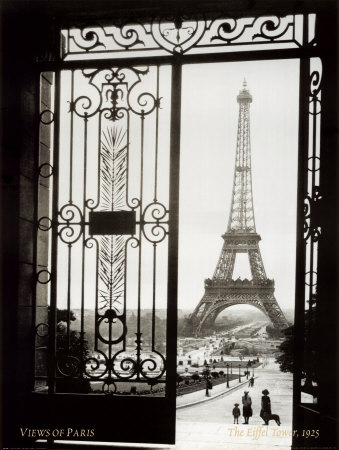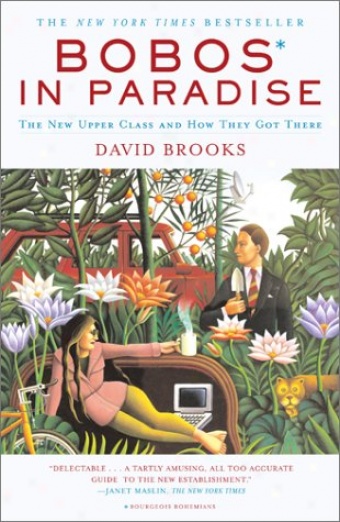 Note:
Note: This post is part of my MA dissertation which was about city and myth."Paris, a Modern Myth" is a theory by Roger Caillois. Here, I tried to explain this theory and applied it for my approach about "The Myth of New York City".
Paris, a Modern MythBeing concerned with the diminishing presence of myth in modern human life, Roger Caillois begins his essay, Paris, a Modern Myth, by claiming that what causes myths to be less considered is that they do not meet the needs which they previously fulfilled. However, it is not really clear how by what powers those needs are fulfilled in today’s mechanized world. Since myth is an imaginary concept, the first option may be literature and it is literature which can fulfill those mentioned needs. Perhaps, this is the meeting point of modern myth and literature.
After stating the relationship between literature and myth, Caillios speaks of a power which literature may have: “And the problem is brought forth in collective scale, without considering myth as a specific concept. Literature does achieve the same power as that of the media, but in the realm of imagination” (Caillois 66).
When literature achieves a considerable power in the realm of imagination it has an indirect and even more important influence than myth, while having effects that are similar to those of myth. It is a kind of sociology of literature which pays attention to both popular and elitist literature. Regarding the issue of sociology of literature, it can be said that a subjective image of the metropolis has been made in this view, a city which has such a strong effect on imagination that it does not consider the correctness of that effect.
This is the point at which we can understand the imaginative features of mythical representation. “The historians of literature have not overlooked the elevation of the city to an epical status or the sudden praise of the city. This event can be observed in the first half of the 19th century, when writers began depicting Paris with a laudatory tone” (67).
These are the end results of the presence of imagination aspects of life. The surrounding world is no longer remote and out of reach; it is a world in which everyone can live and imagination is a part of it. To Caillois, who wants to present the myth of Paris as a modern myth, the most obvious form of this phenomenon which has coincided with the emergence of great industries and the urban proletariat, is the transformation of adventure stories into detective novels. In other words, we can see a change in literary genres in relation to the increasing development of modern societies. This transformation is surely the result of the fact that the locations of the novels have been displaced from jungles and meadows to cities and as a result, the adventurous novels have been turned into detective novels. One of the pioneers in this respect is James Fenimore Cooper, to whom Balzac always points to his debate. Some novels such as Mohicans de Paris emerge in this era.
The mythical structure grows fast, so with the presence of metropolises in the novels and stories, the mythical hero comes into them to conquer the modern metropolis. This is a hero who differs substantially from previous heroes in these novels. City life is a new phenomenon. There are few works in French Romanticism which do not address the capital: the voice of the hero in Balzac’s novels, from Rastignac to novels by Ponson du Terrail, addresses the “Modern Babel” (la Babel Moderne) which is Paris. His novels treat Paris as a character within the novel. Rastignac says: “Hereafter, you and I are Paris!” In Le Club des Valets de Coeur, Sir Williams exclaims: “oh, Paris, Paris! Thou are the real Babel, the real battlefield of the wise men…” (Ponson du Terrail 58) these works are continuously created whose main and ambiguous character is the city and the name of Paris is almost a part of the book title. It is clear that the readers accepted this kind of work. The hero in the Paris novel is also transformed to a modern hero. This hero can be the hero of Pierre Very’s detective novels. The new hero in detective novels which take place in the capital causes a great development in the mythical description of the capital and bridges the deep split between a mysterious Paris and a mythical or modern Paris.
Roger Caillois notes: “At first myth-making resorted to facilities such as the darkness and the mysterious districts of city and occupied overcrowded places. The Louvre, police stations, cafés, etc. And the myths captured the reality everywhere” (74). “The inspector -the hero in the story- travels the city stealthily and during this trip omnibus seems to act as mythical ships” (Chesterton 11) .
The elevation of city life to a new level of myth has undoubtedly been influenced by modernity. Those who know Baudelaire understand the position of the concepts related to modernity in his mind and recognize him as a decisive and vigorous supporter of the modern moral. Regarding the mythical portrayal of the city, Baudelaire praises Balzac and believes he has explained the myth of Paris better than any other. Following this procedure, Victor Hugo joins this movement and writes Les Miserables which is mostly the myth of Paris.
Developing his argument, Baudelaire begins to analyze the modern protagonist of the novel and believes that this protagonist has specific features. Baudelaire and Balzac’s concern “about modernity develops to the extent that they look for it in any trifling thing such as makeup, fashion and the selection of a shirt” (78). Roger Caillois notes: “It is certainly necessary for a mythical city –which is the origin of passions, and motivates even experienced people– to have a powerful and determined hero, who has a mythical authority” (Caillois 79).
According to Caillois’s approach, the modern city, which has become mythical, is the origin of passions and corrupted places which mislead humans from their right path. Caillois states: “For the sake of illuminating the mind, elevating the city to a mythical level means indisputable support for modernity” (75). In a historical overview of French literature, Caillois concludes that Romanticism in the works of Balzac and Baudelaire has been able to make the myth of the city and this might have been the reason for the non-existence of the myth of Paris. Before the 1840s, Romanticism had just begun and the world had not yet experienced modernity, which originated from and emerged in the advancements that took place after the Industrial Revolution. At that time Paris did not have the capacity for becoming a myth in French literature. The circumstances for its transformation into myth were created alongside the emergence of literature mingled with imagination, which was a result of the progress of modernity. Writers like Baudelaire and Balzac turned to this form of imagination and as a result, mythical appearances emerged in their works.
Briefly, “in 1840, a great change took place in the outer world, particularly in the city view. At the same time a mythical concept of the city emerges, which leads to a change in the protagonist of novels and paves the way for a revision of Romantic values” (81).
Paris, a Modern Myth develops Caillois's discussion of Romantic individualism regarding second-generation Romantics, such as Baudelaire and Balzac. “Roger Caillois and his friends established the College of Sociology as an attempt to explore the questions raised by surrealism and the political events during the postwar era. The founders believe that under those circumstances mythology can be defined as an interface between blind social demands and certain obscure needs of the human soul” (Frank 173). There was the question “what is the counterpart of archaic myth in modern society?” Paris, a Modern Myth offers a double answer: it might be literature or it might not.
Caillois “offers a historical, sociodemographic explanation for the general shift in representation of Paris around 1840, for what he calls the poeticization of urban life. He argues that “the elevation of urban life to a mythical status immediately meant a keen commitment to modernity”, that is, to reality, instead of the escapist strategies of previous writers” (174).
Roger Caillois concludes that “the myth of Paris indicates the strange powers of literature and this is a meaningful conclusion” (Caillois 86). According to Baudelaire, “literature as an imaginative concept tries to translate the outer world into mythical language” (86).
Before turning to Sattari’s Myth of Tehran, it is good to refer to Sattari’s opinion on Paris, a Modern Myth, since he has translated it into Persian. Sattari believes that “we can say that Paris as a powerful capital with its s past, no longer has a place in France literature; instead, people’s action and reaction, their judgment, their feeling, the manner of their makeup, and their freedom in expressing their taste have become mythical. It is their total interactions which Sattari calls Parisinaism” (Sattari 246).
BibliographyCaillois, Roger Paris, a Modern Myth, Trans by Jalal Satari, Tehran: Nashr-e Markaz, 1384.
---. Paris, Mythe Moderne, Le Mythe et I'homme, Paris: Galimard, 1938.
Chesterton, Gilbert Keith. The Defendant. London: Dent, 1901.
Sattari, Jalal. The Myth of Tehran. Tehran: Cultural Research Bureau, 1385.






